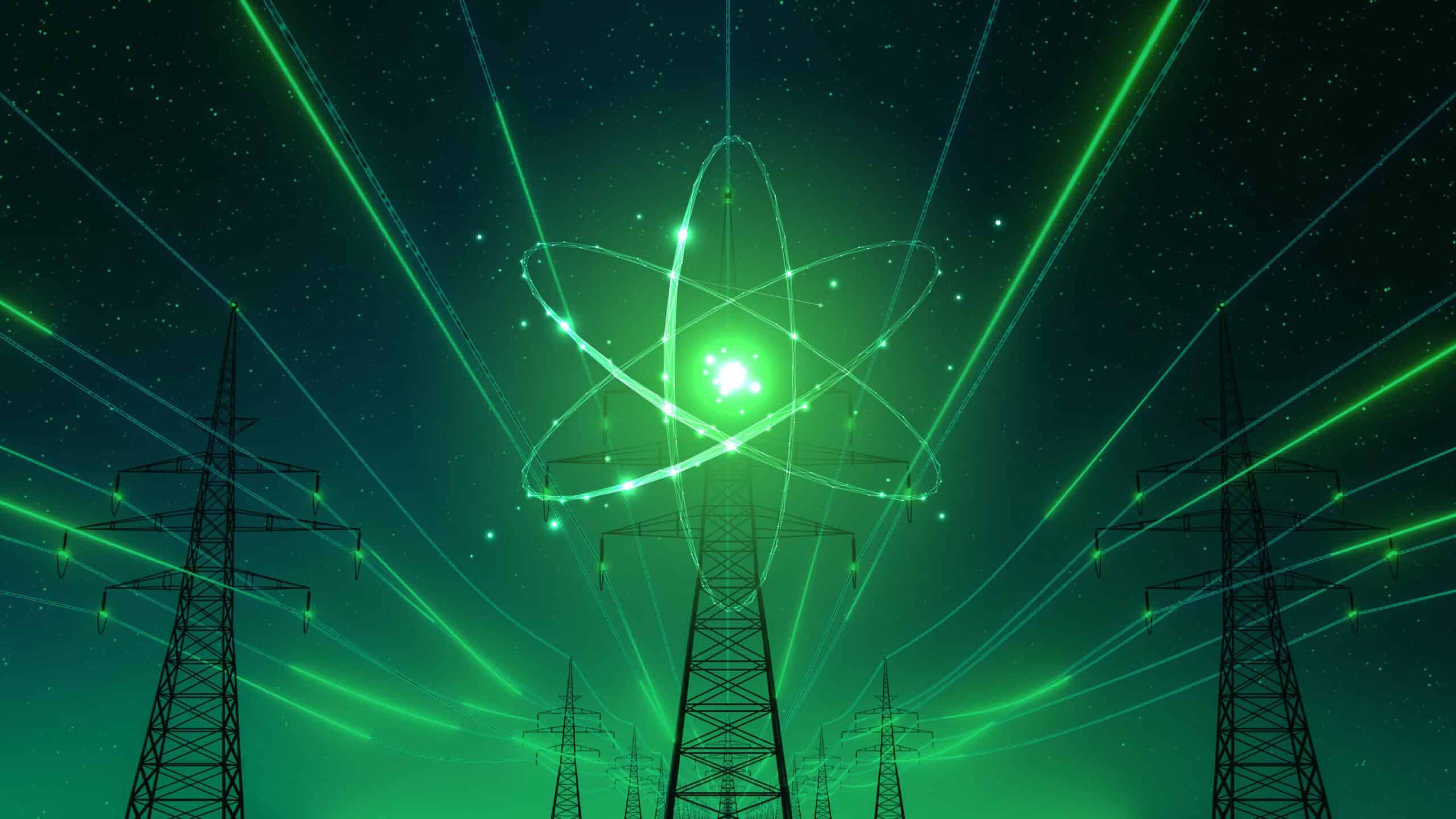Ensuring Cyber and Electromagnetic Effects Integration for Multi-Domain Operations

By Mallory Arnold
Over the past four decades, Amentum has supported the U.S. armed forces and the Department of Defense (DoD) in their mission to acquire, develop, test, and deploy capable Electronic Warfare and Cyber (EW&C) systems. Throughout our corporate history, our subject matter experts have been integrally involved with the full spectrum of services across numerous efforts and multiple customers, including the Joint Improvised Explosive Device (IED) Defeat Organization, Joint Counter Radio-Controlled IED Electronic Warfare Squadron ONE, the Air Force Center of Excellence, the Navy’s Fleet EW Center, the Navy Marine Corps Spectrum Center, and the Naval Surface Warfare Centers (NSWC) in both Crane, Ind. and Dahlgren, Va.
Amentum has maintained a vigilant focus on the exponential growth in the number of DoD systems that are dependent on the electromagnetic spectrum (EMS). As the EMS has become increasingly congested and contested, Amentum has been growing our business with EW and spectrum customers across the services.
We are all sharing the spectrum now – allies and adversaries alike. The integration of electromagnetic effects is more critical than ever as joint military services (Air Force, Army, Marine Corps, Navy and Space Force) embrace Multi-Domain Operations (MDO) and the concept of Joint All Domain Command and Control (JADC2). The Training and Doctrine Command MDO pamphlet sums up the importance of EW&C: “The emerging operational environment and the threat necessitate adapting the Joint Force’s current understanding of the battlefield. Adversaries have expanded the battlefield by making space, cyberspace, electronic warfare, and information key components of their operations.”
Balancing Integration Between PORs and QRCs: Each Area of Operation (AOR) demands we tailor tools and technology to provide solutions that address adversary capabilities and capacities and provide overmatch. Historically speaking, Programs of Record (PORs) and Quick Reaction Capabilities (QRCs) have been developed placing priority on the key performance parameters that drive programs on cost, on time and on budget with little to no regard of assuring interoperability with other systems operating within the same radio frequency (RF) spectrum. This lack of deconfliction has had significant negative impacts to real-world operations and has demanded costly remediation. This has left systems stove-piped from a data perspective, and platforms unsustainable from a size, weight, power and cost perspective, ultimately contributing to the very difficult challenge of effectively integrating conventional kinetic operations with cyber and space. Amentum has helped program offices evaluate the risks associated with spectrum use. We deliver success to our customers by integrating real-world operational expertise and understanding, combined with decades of proven technical engineering services into our solutions. We are proud of our ability to efficiently and effectively enhance existing POR systems while maintaining a command of emerging technologies to drive innovation into new solutions. Specifically, Amentum has developed new communication paths between Navy cryptologic and EW assets. Our team has also been instrumental in integrating electronic effects by providing EW analysis of live testing results and developing solutions to enhance Combat Management Systems integration in support of kinetic engagements.
Amentum stays current on innovative thought in the EW&C area and keeps our customers fully informed. As an example, we call your attention to the NATO Cooperative Cyber Defense Centre of Excellence (CCDCOE), which recently published a book entitled, “Cyber Threats and NATO 2030: Horizon Scanning and Analysis.” Chapter eight, titled “Cyber Capabilities and Multi-Domain Operations in Future High-Intensity Warfare in 2030,” focuses on the technological challenges with cyber and electronic effects integration.
Internet of Military Things (IoMT): According to the CCDCOE, one of the primary technological drivers that will help achieve integrated electronic effects is an IoMT and artificial intelligence (AI)-enabled C2. An IoMT would create a network of interconnected computing devices, sensors, and weapons platforms that could collect and create vast amounts of shareable data that could inform cyberattack packages. Initiatives like JADC2 and the Mission Partner Environment envision providing a cloud-like environment for the joint force. Amentum has been supporting JADC2 initiatives in the Indo-Pacific Command AOR and we have worked closely with our customer to enable higher levels of spectrum deconfliction to optimize mission effectiveness in operations requiring a military balance of electronic attack and surveillance. In addition, we have been helping provide a Common Operating Picture that synchronizes full spectrum cyberspace operations into a common combat cloud, enabling tightly integrated AI and machine learning initiatives to augment the teams and serve as a force multiplier.
Interoperability: The second well-known technology driver is interoperability. Interoperability shortens integration times because it eliminates the need for each system to have unique messaging interfaces to other systems. The Army has been working on developing EW interoperability through the C5ISR/EW Modular Open Suite of Standards (CMOSS) initiative which is a broad set of standards for both hardware and software. CMOSS is based on and aligned with the Sensor Open Systems Architecture (SOSA) Consortium’s open standards. Initiatives like CMOSS guide decisions regarding common sets of data models and data fabrics. They define messaging and data standards and allow for modular development. Common data models both define data items, and control messages that are shared between services. Components communicate via common frameworks typically publication/subscription buses or a request/reply peer-to-peer protocol. Standards like Future Airborne Capability Environment which is part of the SOSA Consortia, are gaining tactical traction in current and future EW programs, including the Next Generation Jammer. In addition, the photon software framework is already being used in several EW&C systems. Amentum employees have consistently been invited to participate personally in interoperability standards studies such as the National Science Foundation’s Enhancing Access to Radio Spectrum Study and the Office of Naval Research Joint Open Architecture Spectrum Infrastructure Ontology for Spectrum Interoperability. Our employees also supported the Joint Electronic Warfare Center with interoperability and EM compatibility assessments of equipment, software, and all electronic and electrical systems, subsystems, and equipment. This work informed U.S. Strategic Command’s EW Capabilities Assessment and Joint Requirements Oversight Council Joint Capabilities Document.
Integration: Lastly, integration challenges exist both from a cultural perspective and technology perspective. Culturally speaking, there are still several advocates for keeping EW and cyber operations separate. But that mindset is changing. In 2020, the DoD published the Electromagnetic Spectrum Superiority Strategy, transitioning from traditional “EW vs Spectrum vs Cyber” to the unified treatment of these activities as Electromagnetic Spectrum Operations. From a technology perspective, integration activities focus around the insertion, installation and addition of new equipment or capabilities into subassemblies of a system, or system of systems. However, integrating new technologies has created excessive heat generation and less space on the platforms for Warfighters. Amentum has a corporate focus on integration efforts that help bridge compatibility across disparate spectrum-dependent systems and we have directly participated in numerous EW-oriented projects and military exercises that analyze innovations and initiatives in military tactics, techniques and procedures as well as systems to help provide integration of technologies, platforms, and effects. Our team also supports the Electromagnetic Environmental Effects Core for the NSWC Dahlgren working on EM compatibility, interference mitigation and interoperability across several weapon systems and platforms to include standards compatibility. The Army’s Project Convergence is a prime example of a large-scale, joint integration exercise. One of the objectives of Project Convergence is to successfully conduct operations in a contested electromagnetic environment (Congressional Research Service, 2020). Amentum also supported Project Convergence with new waveform identification during a sensor integration exercise.
Conclusion: The demand for successfully integrating EW and cyber warfare capabilities is here to stay. Technology is driving the inextricable linkage at a speed to which our military is challenged to keep pace, but the DoD is responding. On July 15, 2021, the Secretary of Defense Lloyd James Austin III signed the 2020 Electromagnetic Spectrum Superiority Strategy’s Implementation Plan which provides the DoD with the direction and executive oversight needed to achieve the Strategy’s vision of:
“freedom of action in the electromagnetic spectrum, at the time, place, and parameters of our choosing.”
Amentum is proud to offer a current, relevant expansive portfolio of EW, Spectrum, Cyber, Signals Intelligence, and RF services performed by operational and technical engineering experts with a unique understanding of Cyber Electromagnetic Activities challenges across the armed forces and the ability to apply lessons learned and best practices to deliver customer-focused success.


